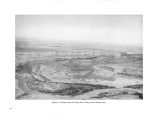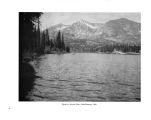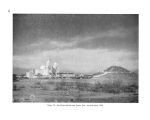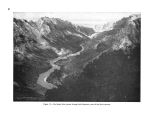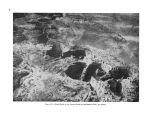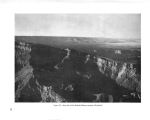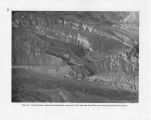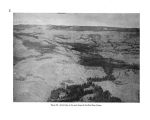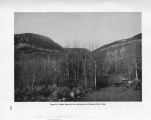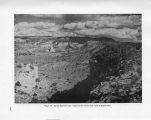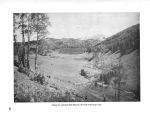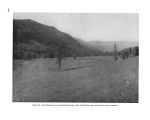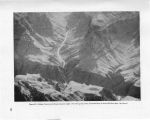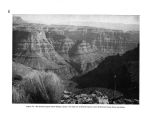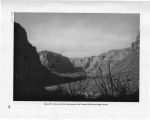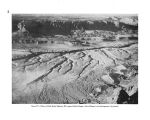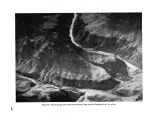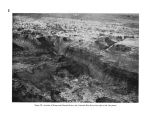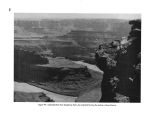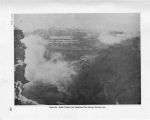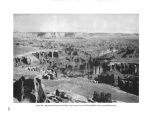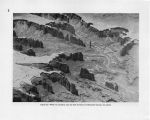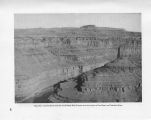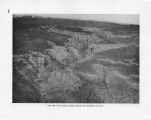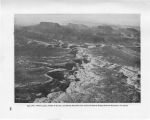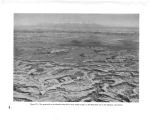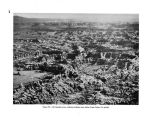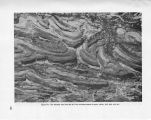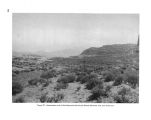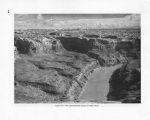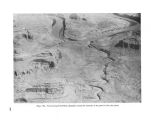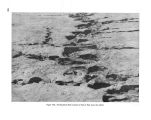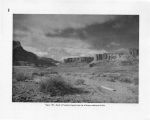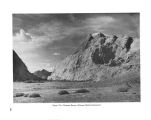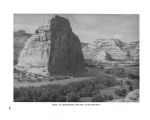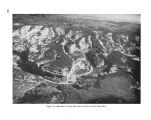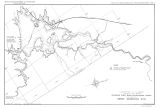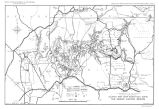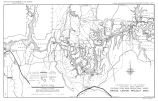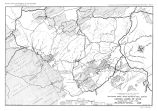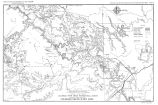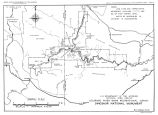| OCR Text |
Show without winter feeding in the Northwest States collapsed. By 1895, " not an acre of grazing land was left unoccupied, and ranges that for permanent and regular use would have been fully stocked with a cow to every 40 acres were loaded until they were carrying 1 to every 10 acres." 34 In the Southwest the story was repeated a few years later. Grass grew more slowly than in northern regions because of the lighter rainfall. Although often luxuriant, the grass withstood the reckless grazing competition less easily because its moisture requirements were close to the danger line of water availability. Mountains and plains, stripped of their green covering, turned to dust. Freshets tore away the trampled sod of mountain meadows and cut deep gullies into the unprotected soil, thereby draining the meadows and turning them into deserts. In 1893, drought and ruination of the range brought the cattle boom of the Southwest crashing to a finish. 35 The forage of the early days, like the wildlife, never has regained its primitive abundance. Perhaps it never will, even with the application of conservation measures learned in later years, for when the fcrage commenced to die from overuse, the soil began to die, too. Just as animals and plants are dependent upon one another for life, so are plants and the soil mutually dependent, both for their daily existence and their perpetual renewal. Importance of topsoil.- Topsoil, the life substance of grass, is a porous, chemically active medium, sometimes one- third to one- half air and from a tenth to one- fourth water. 36 In the surface layers of good topsoil, the air, the water, and the warmth of the sun combine to form a rich culture medium for a vast unseen world of struggling micro- organisms- billions of them to the square foot. Bacteria, protozoa, and microscopic fungi, during their own life processes, change the free nitrogen of the soil, and the nitrogen of decaying materials, into substances that plant roots can assimilate. By their endless rotting and disintegrating action on rocks and dead roots, on the bodies of other animals and last year's half- buried leaves, they keep the spaces between the soil particles open, whereby air, water, 34 Barnes, 1926. 35 Lord, 1938, p. 66. 36 Lord, 1938, p. 1. and warmth keep the fermentation process going on endlessly. The microscopic soil- makers are aided by the millions of tiny worms and burrowing insect larvae that drag living and decayed vegetation, which they use for food, beneath the surface where the bacteria, too, can reach it. This yeasty brew of invisible, silently struggling creatures is a thin web of life draped over the mountains and valleys of the earth wherever there is topsoil. The chemicals which it distills are the life- juices that the roots of the plants must suck from the soil in order to live. Without topsoil, life for most plants is impossible. However, topsoil seldom is more than 7 to 12 inches deep. 37 The chemical processes that form it, through the gradual decay of underlying rock, and the mixing of this rock with the products of organic decay derived from the surface of the soil above, are very leisurely. Some rich soils may accumulate at the rate of not more than 1 inch per 1,000 years. 38 Therefore, if a 7- inch layer of such a topsoil is removed, the full thickness cannot be replaced from the barren, chemically inert stratum of disintegrating rock beneath it in less than 7,000 years, even if all other conditions should be favorable for the required reaction. Thus, when all of the topsoil is removed, the land dies, and with it die also the plants and the animals, whose lives are all so inextricably bound up together. Difference between natural and man- caused erosion.- Removal of the soil layers, by whatever means, is known as soil erosion. We are concerned with it in the Colorado River Basin because much of this soil erosion was caused by ruinous overgrazing in the early days of settlement. But first a frequent and dangerous misconception must be corrected regarding two very different kinds of erosion, and man's responsibility in relation to them. Natural or geologic soil erosion is a slow process, except in a few special areas. It is so slow that in humid climates, where the soil is held together by a luxuriant protective mantle of forest and grassland, the rate of new topsoil formation balances the rate of erosion. Even in an arid climate like that which prevails in most of the Colorado River Basin 37 Bennett, 1941, p. 1. 38 Lord, 1938, p. 7. 63 |




























